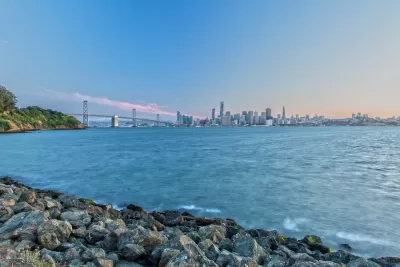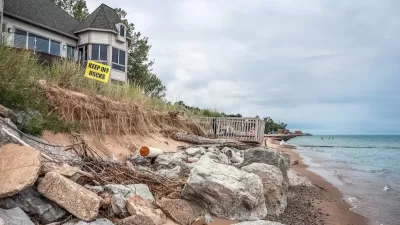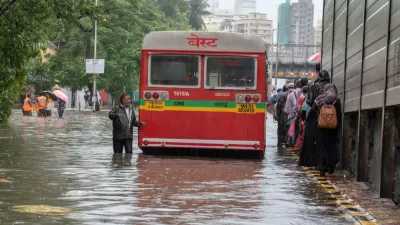In Manila and the San Francisco Bay Area, the severe impacts of rising sea levels are indisputable. But the only similarities are that both places face very uncertain futures.

In a multimedia piece, reporter Somini Sengupta and photographer Chang W. Lee look at the threats, challenges, and responses to climate change in two very different places: Manila and the San Francisco Bay Area.
"In both places, it turns out, how you face the rising sea depends mostly on the accident of your birth: Whether you were born rich or poor, in a wealthy country or a struggling one, whether you have insurance or not, whether your property is worth millions or is little more than a tin roof," says Sengupta.
Climate change is affecting Manila’s most vulnerable residents especially hard, the result of decades of poor land use planning throughout the metropolitan area. "Storms repeatedly sweep away spindly-legged bamboo and tin houses on the water. People flee for a while, only to come back because they have nowhere better to go," writes Sengupta.
In the Bay Area, addressing rising sea levels is complicated by politics and high property values, Sengupta points out. "Unlike Manila, Bay Area municipalities are wealthy. And many of them are already paying handsomely to fortify high-value coastal infrastructure at risk."
The situations in Manila and the Bay Area highlight the difficult questions that remain about the best responses to climate change in coastal areas, says Sengupta. "They could adapt to the rising tide, which could mean moving people out of harm’s way. Or, they could try to force the water to adapt to their needs by raising their defenses."
FULL STORY: A Crisis Right Now: San Francisco and Manila Face Rising Seas

Alabama: Trump Terminates Settlements for Black Communities Harmed By Raw Sewage
Trump deemed the landmark civil rights agreement “illegal DEI and environmental justice policy.”

Planetizen Federal Action Tracker
A weekly monitor of how Trump’s orders and actions are impacting planners and planning in America.

The 120 Year Old Tiny Home Villages That Sheltered San Francisco’s Earthquake Refugees
More than a century ago, San Francisco mobilized to house thousands of residents displaced by the 1906 earthquake. Could their strategy offer a model for the present?

Ken Jennings Launches Transit Web Series
The Jeopardy champ wants you to ride public transit.

BLM To Rescind Public Lands Rule
The change will downgrade conservation, once again putting federal land at risk for mining and other extractive uses.

Indy Neighborhood Group Builds Temporary Multi-Use Path
Community members, aided in part by funding from the city, repurposed a vehicle lane to create a protected bike and pedestrian path for the summer season.
Urban Design for Planners 1: Software Tools
This six-course series explores essential urban design concepts using open source software and equips planners with the tools they need to participate fully in the urban design process.
Planning for Universal Design
Learn the tools for implementing Universal Design in planning regulations.
Clanton & Associates, Inc.
Jessamine County Fiscal Court
Institute for Housing and Urban Development Studies (IHS)
City of Grandview
Harvard GSD Executive Education
Toledo-Lucas County Plan Commissions
Salt Lake City
NYU Wagner Graduate School of Public Service





























